Abstract
OBJECTIVES--To survey audit activity in primary care and determine which practice factors are associated with completed audit; to survey the quality of completed audit projects. DESIGN--From April 1992 to June 1993 a team from the medical audit advisory group visited all general practices; a research assistant visited each practice to study the best audit project. Data were collected in structured interviews. SETTING--Staffordshire, United Kingdom. SUBJECTS--All 189 general practices. MAIN MEASURES--Audit activity using Oxford classification system. Quality of best audit project by assessing choice of topic; participation of practice staff; setting of standards; methods of data collection and presentation of results; whether a plan to make changes resulted from the audit; and whether changes led to the set standards being achieved. RESULTS--Audit information was available from 169 practices (89%). 44(26%) practices had carried out at least one full audit; 40(24%) had not started audit. Mean scores with the Oxford classification system were significantly higher with the presence of a practice manager (2.7(95% confidence interval 2.4 to 2.9) v 1.2(0.7 to 1.8), p < 0.0001) and with computerisation (2.8(2.5 to 3.1) v 1.4 (0.9 to 2.0), p < 0.0001), organised notes (2.6(2.1 to 3.0) v 1.7(7.2 to 2.2), p = 0.03), being a training practice (3.5(3.2 to 3.8) v 2.1(1.8 to 2.4), p < 0.0001), and being a partnership (2.8(2.6 to 3.0) v 1.5(1.1 to 2.0), p < 0.0001). Standards had been set in 62 of the 71 projects reviewed. Data were collected prospectively in 36 projects and retrospectively in 35. 16 projects entailed taking samples from a study population and 55 from the whole population. 50 projects had a written summary. Performance was less than the standards set or expected in 56 projects. 62 practices made changes as a result of the audit. 35 of the 53 that had reviewed the changes found that the original standards had been reached. CONCLUSIONS--Evaluation of audit in primary care should include evaluation of the methods used, whether deficiencies were identified, and whether changes were implemented to resolve any problems found.
Full text
PDF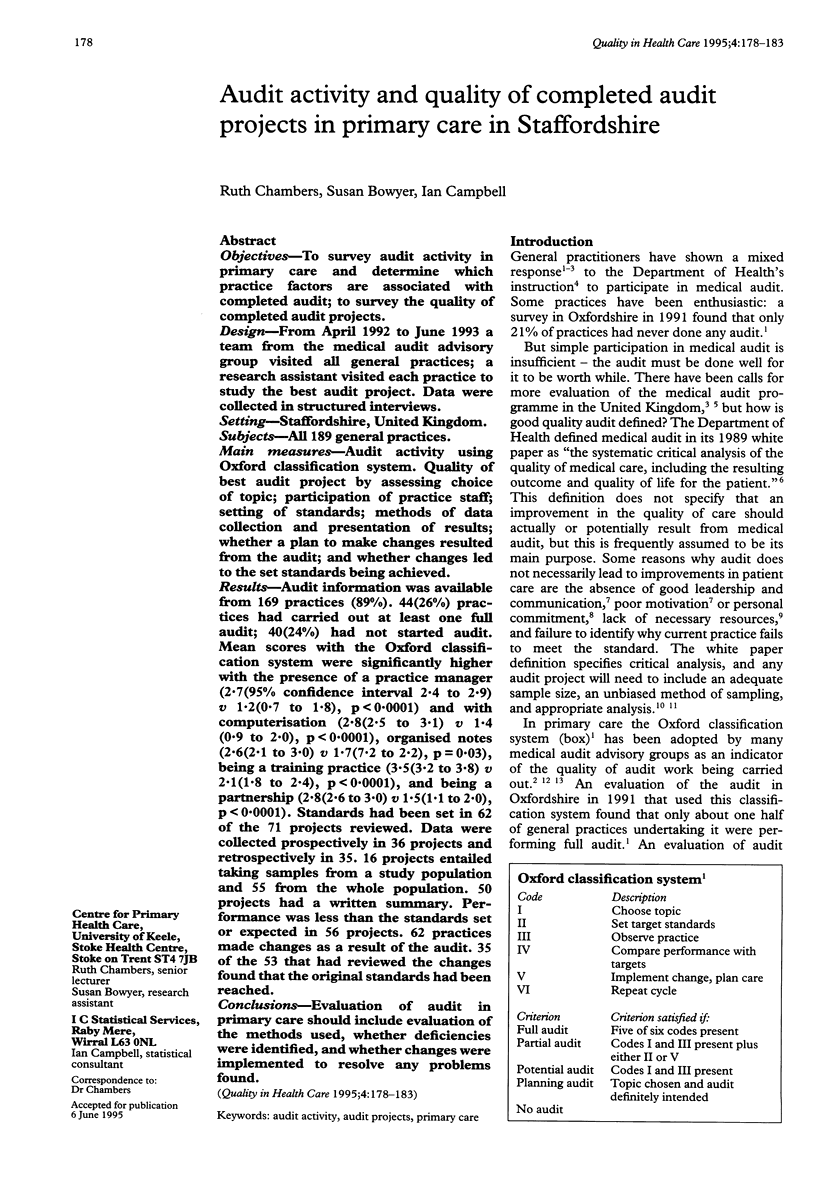
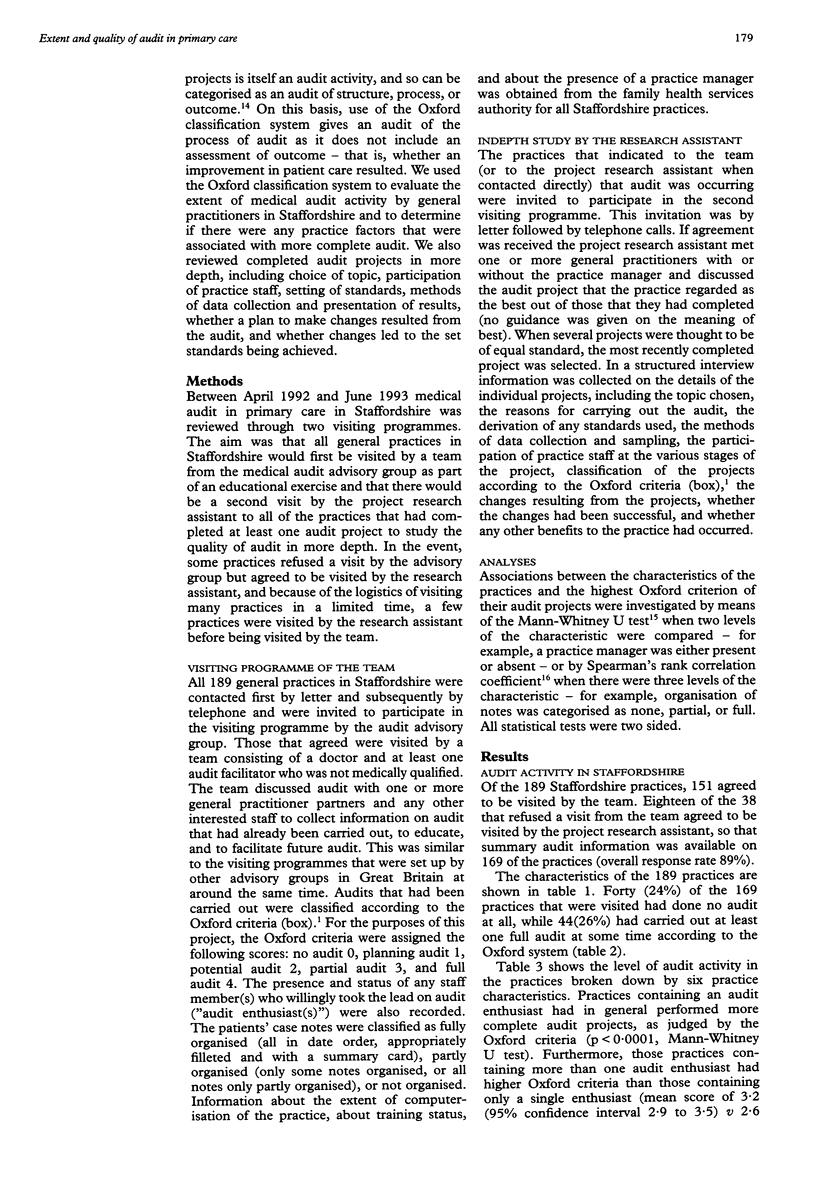
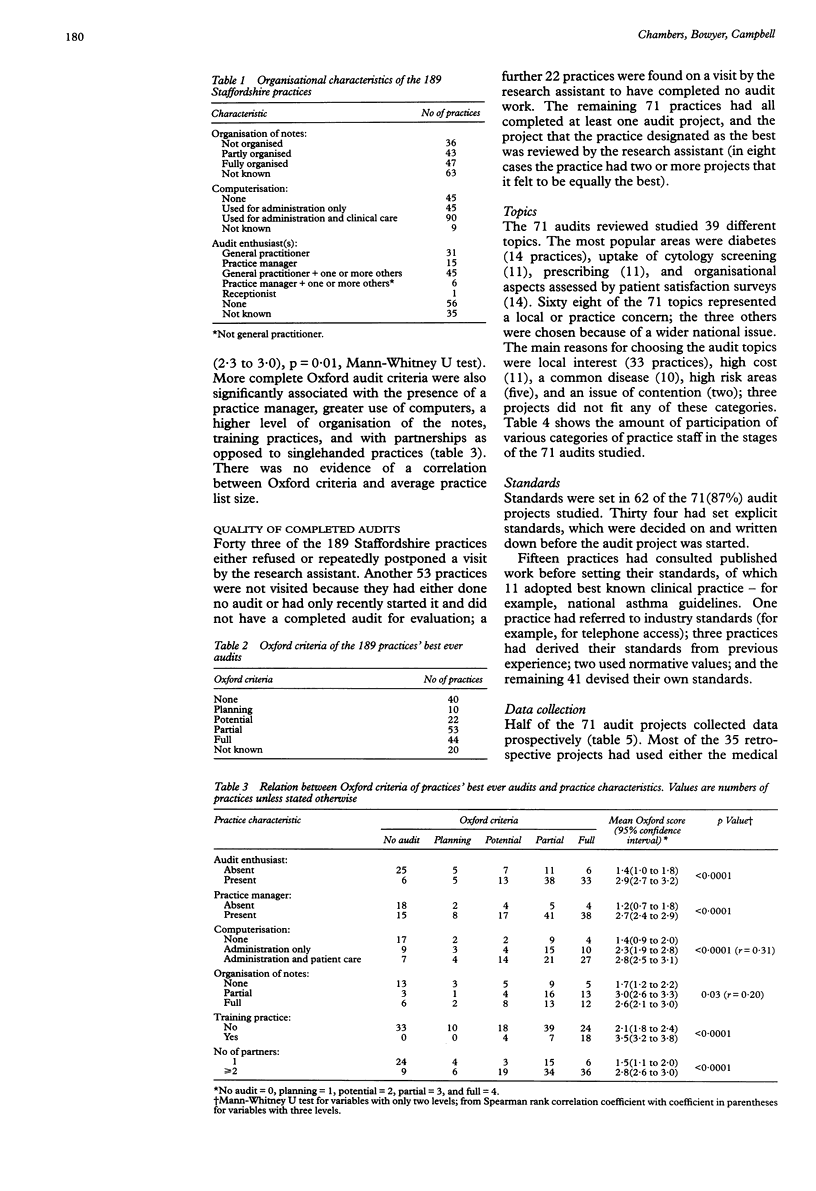
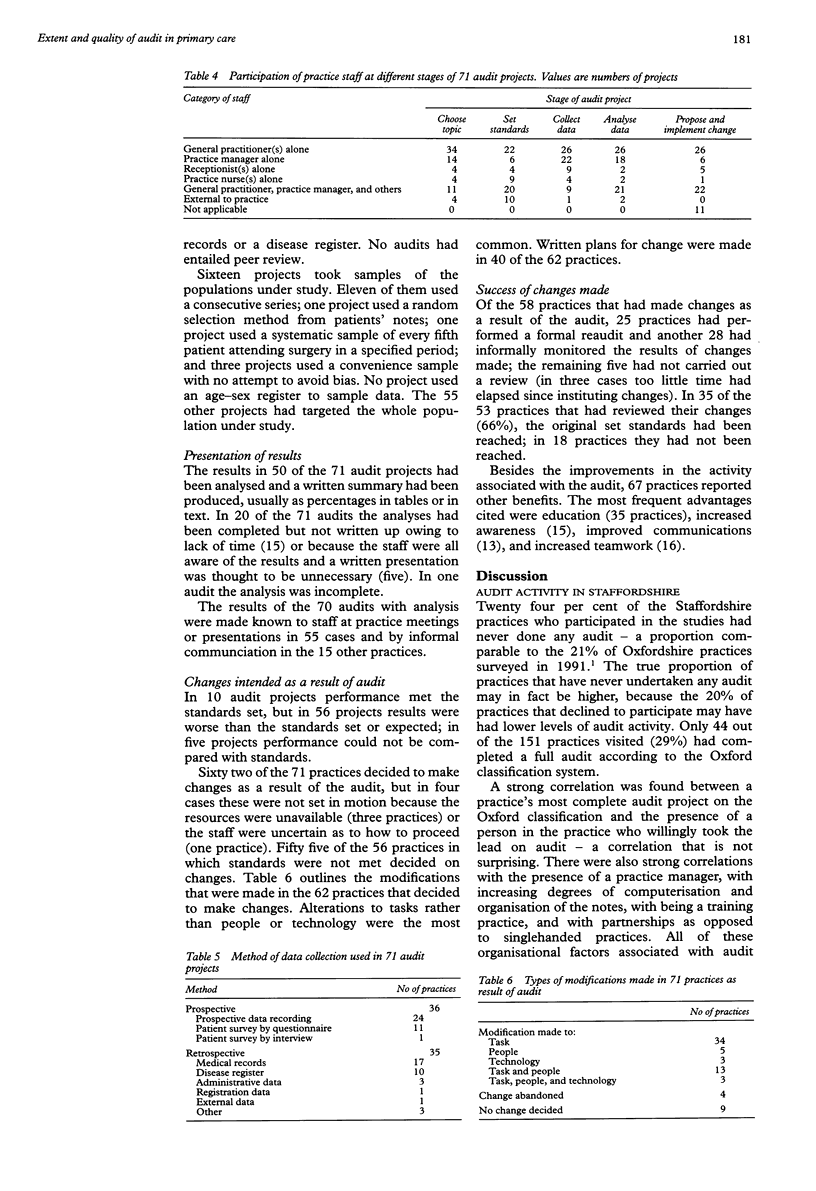
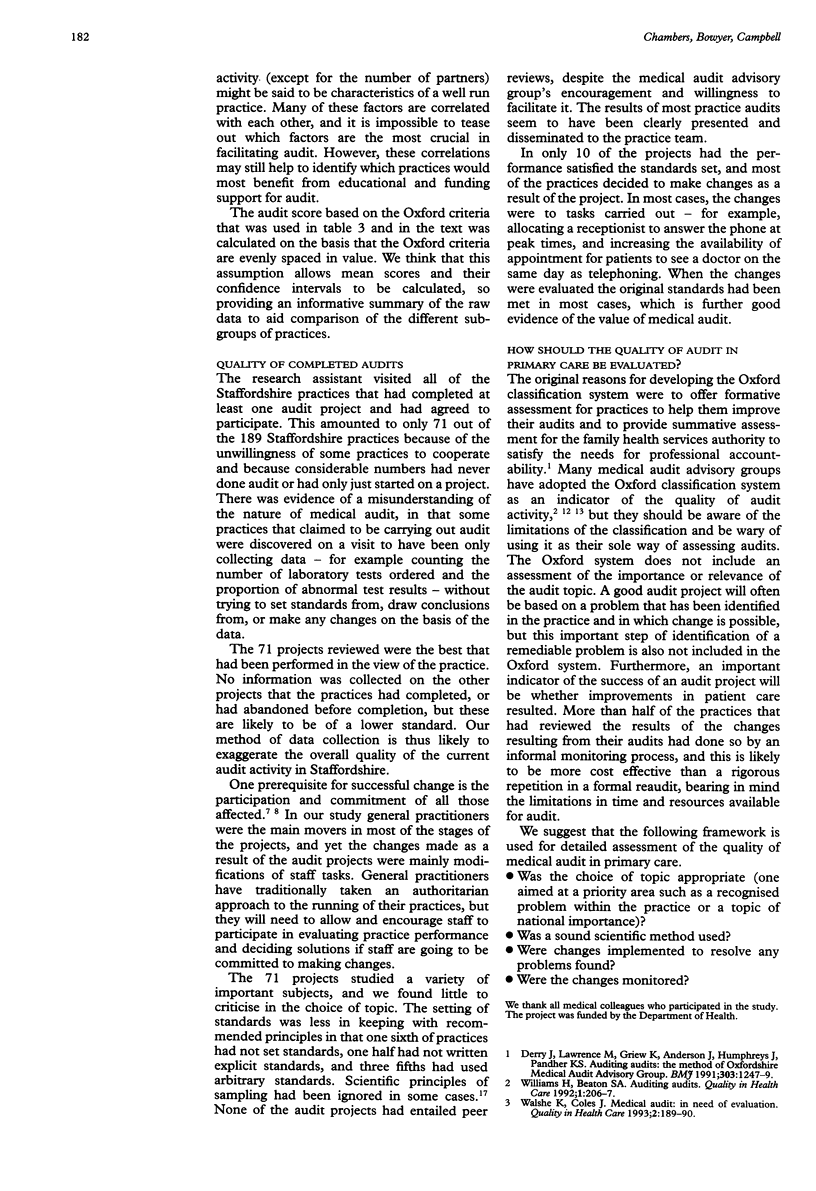
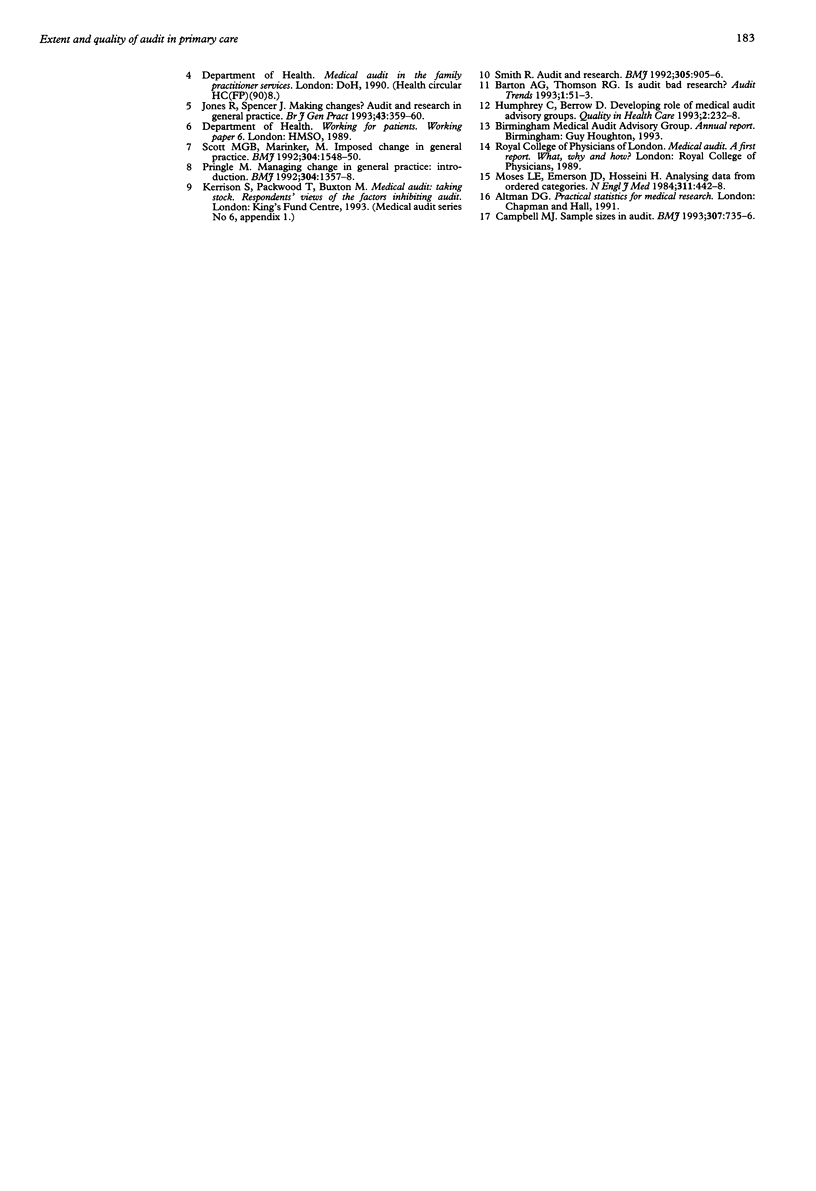
Selected References
These references are in PubMed. This may not be the complete list of references from this article.
- Campbell M. J. Sample size in audit. BMJ. 1993 Sep 18;307(6906):735–736. doi: 10.1136/bmj.307.6906.735-c. [DOI] [PMC free article] [PubMed] [Google Scholar]
- Derry J., Lawrence M., Griew K., Anderson J., Humphreys J., Pandher K. S. Auditing audits: the method of Oxfordshire Medical Audit Advisory Group. BMJ. 1991 Nov 16;303(6812):1247–1249. doi: 10.1136/bmj.303.6812.1247. [DOI] [PMC free article] [PubMed] [Google Scholar]
- Humphrey C., Berrow D. Developing role of medical audit advisory groups. Qual Health Care. 1993 Dec;2(4):232–238. doi: 10.1136/qshc.2.4.232. [DOI] [PMC free article] [PubMed] [Google Scholar]
- Jones R., Spencer J. Making changes? Audit and research in general practice. Br J Gen Pract. 1993 Sep;43(374):359–360. [PMC free article] [PubMed] [Google Scholar]
- Moses L. E., Emerson J. D., Hosseini H. Analyzing data from ordered categories. N Engl J Med. 1984 Aug 16;311(7):442–448. doi: 10.1056/NEJM198408163110705. [DOI] [PubMed] [Google Scholar]
- Pringle M. Managing change in general practice: introduction. BMJ. 1992 May 23;304(6838):1357–1358. doi: 10.1136/bmj.304.6838.1357. [DOI] [PMC free article] [PubMed] [Google Scholar]
- Scott M. G., Marinker M. Imposed change in general practice. BMJ. 1992 Jun 13;304(6841):1548–1550. doi: 10.1136/bmj.304.6841.1548. [DOI] [PMC free article] [PubMed] [Google Scholar]
- Smith R. Audit and research. BMJ. 1992 Oct 17;305(6859):905–906. doi: 10.1136/bmj.305.6859.905. [DOI] [PMC free article] [PubMed] [Google Scholar]
- Walshe K., Coles J. Medical audit: in need of evaluation. Qual Health Care. 1993 Sep;2(3):189–190. doi: 10.1136/qshc.2.3.189. [DOI] [PMC free article] [PubMed] [Google Scholar]


